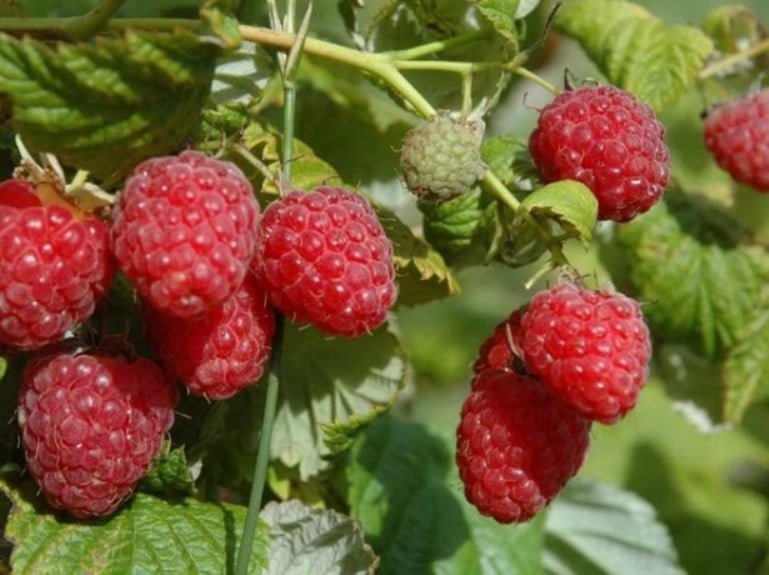EastFruit experts have repeatedly drawn attention to the fact that Uzbekistan, despite being a large exporter of fruits and vegetables, completely missed the key trend in the global fruit market – the rapid growth in consumption and trade of berries. Since berries are among the most expensive segments of the fresh produce business, it would be wise for Uzbekistan, which is very farm from the markets, to focus on it.
EastFruit experts have repeatedly drawn attention to the fact that Uzbekistan, despite being a large exporter of fruits and vegetables, completely missed the key trend in the global fruit market – the rapid growth in consumption and trade of berries. Since berries are among the most expensive segments of the fresh produce business, it would be wise for Uzbekistan, which is very farm from the markets, to focus on it.
Nevertheless, the berry segment for Uzbekistan remains niche and focused primarily on the domestic market. Raspberries, however, began to become somewhat of an exception in 2020-2022. Largely due to the creation of several large quick-freezing plants for fruits, berries and vegetables in the country. In May 2022, we visited one of the key regions for growing raspberries in the Fergana region of Uzbekistan. Several hundred hectares of raspberries are compactly grown here, and there is an enterprise for its static freezing.
The technology of growing, harvesting, and packaging raspberries there was very unusual. However, see for yourself in the next short video (it is in Russian but is easy to understand).
In 2022, the popularity of raspberries in Uzbekistan reached its peak. Many farmers planted new raspberry plantations, but they lacked knowledge about growing technologies, fertigation, modern varieties, and product quality requirements.
Also, given the hot climate of Uzbekistan, other crops were planted along with raspberries so that they protected the raspberries from the hot sun and allowed them to take root, and to create some additional income source while plantation is still young. Of course, the practice of intercropping is dubious in modern horticulture, but perhaps in this case it was justified. Write in the comments under the video what do you think about it?
On the plantation that we managed to visit we saw several crops along with raspberries, namely: corn, potatoes, cucumbers, tomatoes and even apple trees. Irrigation was carried out along furrows – this is the most ancient, labor-intensive and inefficient type of irrigation, which consumes a lot of water. And even in those areas where drip irrigation was installed, there was no fertigation.
The farmers could not name the raspberry varieties – they simply called it “local”. The raspberry planting pattern was also very dense. The density was such that there was no room for spraying and harvesting raspberries. Obviously, this greatly complicates and slows down the harvesting of raspberries, increasing the costs of picking. However, it is not a major country in Uzbekistan where until recently labor was abundant and very cheap. Nonetheless, it has a negative impact on quality of the product, as fast picking is very important.
Also, the producers could not answer the question of what kind of raspberry it is: summer or remontant. Raspberries are harvested in May and August. Therefore, most likely this is a technology for growing some old remontant variety adapted to local conditions.
The quality of the berries was very low: small size, poorly formed and uneven, crumbling fruits, as well as low palatability. Obviously, this is a consequence of an outdated variety, poor quality of planting material and shortcomings in the technology of growing raspberries. At the same time, the region for growing raspberries was very suitable – the foothills of the Ferghana Valley.
Raspberries were picked into plastic buckets, as you could see on video, and sold in them, which is not a very suitable packaging for such a fragile fruit. However, until 2023, this business has been generating good returns for small producers for several years in a row. In many ways, this became possible thanks to several new freezing plants, which were created in the country in 2019-2022. However, in 2023, most of them refused to buy raspberries for freezing, or they bought them at a very low price, because they ended up selling frozen raspberries from the 2022 harvest at a huge loss.
The freezing plant we saw in this region was relatively small. Raspberry freezing technology is static. However, the quality of the berries after freezing was also extremely low – after all, freezing cannot improve the quality of the berries, and what we saw in the field was not of very high quality already. This quality category of frozen raspberries can be described as “frozen raspberry block” because the berries did not separate from each other at all. Although we have seen the leftovers only, and, perhaps, the manufacturers had other quality categories of product, which were already sold out by our arrival.
For the sustainable production of raspberries in Uzbekistan, no doubt, significant efforts will be required to introduce new varieties adapted to the country’s climate, study and adapt growing technologies, pos- harvest handing, cooling, etc. We believe that Morocco, one of the world leaders in the exports of both fresh and frozen raspberries, can become an excellent example for Uzbekistan to follow. We also want to thank the leadership of the district and farmers for the warm welcome, hospitality, and openness.




